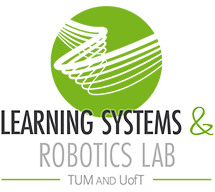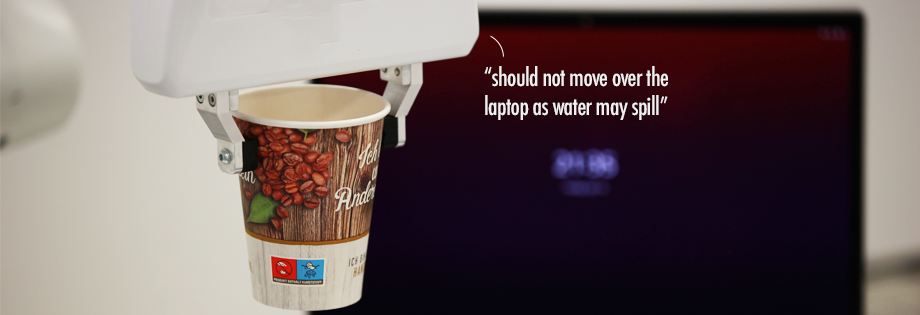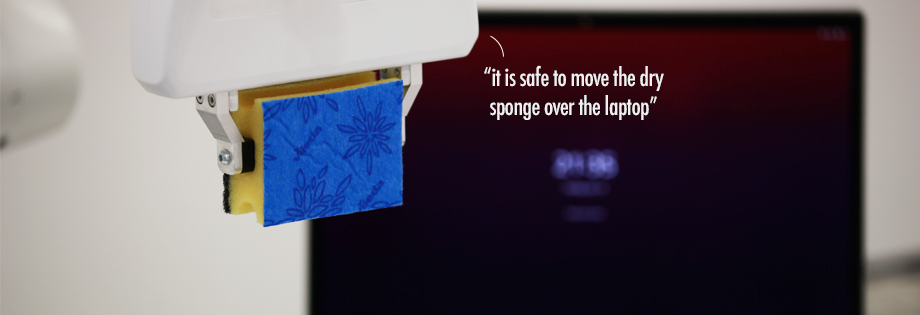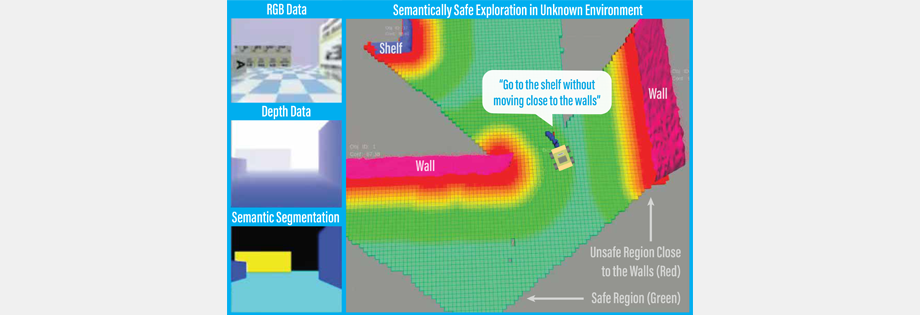Semantic Control for Robotics
For robots to safely interact with people and the real world, they need the capability to not only perceive but also understand their surroundings in a semantically meaningful way (i.e., understanding implications or pertinent properties associated with the objects in the scene). Advanced perception methods coupled with learning algorithms have made significant progress in enabling semantic understanding. Recent breakthroughs in foundation models have further exposed opportunities for robots to contextually reason about their operating environments. Reliably exploiting semantic information in embodied systems requires tightly coupled perception, learning, and control algorithm design. In this project, we aim to close the perception-action loop and develop theoretical foundations and algorithms that allow robots to make semantically safe and intelligent decisions in everyday scenarios. See also https://semanticcontrol.com for additional resources and event updates.
Related Publications
Ensuring safe interactions in human-centric environments requires robots to understand and adhere to constraints recognized by humans as “common sense” (e.g., “moving a cup of water above a laptop is unsafe as the water may spill” or “rotating a cup of water is unsafe as it can lead to pouring its content”). Recent advances in computer vision and machine learning have enabled robots to acquire a semantic understanding of and reason about their operating environments. While extensive literature on safe robot decision-making exists, semantic understanding is rarely integrated into these formulations. In this work, we propose a semantic safety filter framework to certify robot inputs with respect to semantically defined constraints (e.g., unsafe spatial relationships, behaviors, and poses) and geometrically defined constraints (e.g., environment-collision and self-collision constraints). In our proposed approach, given perception inputs, we build a semantic map of the 3D environment and leverage the contextual reasoning capabilities of large language models to infer semantically unsafe conditions. These semantically unsafe conditions are then mapped to safe actions through a control barrier certification formulation. We demonstrate the proposed semantic safety filter in teleoperated manipulation tasks and with learned diffusion policies applied in a real-world kitchen environment that further showcases its effectiveness in addressing practical semantic safety constraints. Together, these experiments highlight our approach’s capability to integrate semantics into safety certification, enabling safe robot operation beyond traditional collision avoidance.
@ARTICLE{brunke-ral25,
title = {Semantically Safe Robot Manipulation: From Semantic Scene Understanding to Motion Safeguards},
author = {Lukas Brunke and Yanni Zhang and Ralf R{\"o}mer and Jack Naimer and Nikola Staykov and Siqi Zhou and Angela P. Schoellig},
journal = {{IEEE Robotics and Automation Letters}},
number = {5},
volume = {10},
pages = {4810--4817},
doi = {},
year = {2025},
abstract = {Ensuring safe interactions in human-centric environments requires robots to understand and adhere to constraints recognized by humans as "common sense" (e.g., "moving a cup of water above a laptop is unsafe as the water may spill" or "rotating a cup of water is unsafe as it can lead to pouring its content"). Recent advances in computer vision and machine learning have enabled robots to acquire a semantic understanding of and reason about their operating environments. While extensive literature on safe robot decision-making exists, semantic understanding is rarely integrated into these formulations. In this work, we propose a semantic safety filter framework to certify robot inputs with respect to semantically defined constraints (e.g., unsafe spatial relationships, behaviors, and poses) and geometrically defined constraints (e.g., environment-collision and self-collision constraints). In our proposed approach, given perception inputs, we build a semantic map of the 3D environment and leverage the contextual reasoning capabilities of large language models to infer semantically unsafe conditions. These semantically unsafe conditions are then mapped to safe actions through a control barrier certification formulation. We demonstrate the proposed semantic safety filter in teleoperated manipulation tasks and with learned diffusion policies applied in a real-world kitchen environment that further showcases its effectiveness in addressing practical semantic safety constraints. Together, these experiments highlight our approach's capability to integrate semantics into safety certification, enabling safe robot operation beyond traditional collision avoidance.}
}Autonomous robots navigating in changing environments demand adaptive navigation strategies for safe long-term operation. While many modern control paradigms offer theoretical guarantees, they often assume known extrinsic safety constraints, overlooking challenges when deployed in real-world environments where objects can appear, disappear, and shift over time. In this paper, we present a closed-loop perception-action pipeline that bridges this gap. Our system encodes an online-constructed dense map, along with object-level semantic and consistency estimates into a control barrier function (CBF) to regulate safe regions in the scene. A model predictive controller (MPC) leverages the CBF-based safety constraints to adapt its navigation behaviour, which is particularly crucial when potential scene changes occur. We test the system in simulations and real-world experiments to demonstrate the impact of semantic information and scene change handling on robot behavior, validating the practicality of our approach.
@inproceedings{qian-icra24,
author={Jingxing Qian and Siqi Zhou and Nicholas Jianrui Ren and Veronica Chatrath and Angela P. Schoellig},
booktitle = {{Proc. of the IEEE International Conference on Robotics and Automation (ICRA)}},
title={Closing the Perception-Action Loop for Semantically Safe Navigation in Semi-Static Environments},
year={2024},
note={Accepted},
abstract = {Autonomous robots navigating in changing environments demand adaptive navigation strategies for safe long-term operation. While many modern control paradigms offer theoretical guarantees, they often assume known extrinsic safety constraints, overlooking challenges when deployed in real-world environments where objects can appear, disappear, and shift over time. In this paper, we present a closed-loop perception-action pipeline that bridges this gap. Our system encodes an online-constructed dense map, along with object-level semantic and consistency estimates into a control barrier function (CBF) to regulate safe regions in the scene. A model predictive controller (MPC) leverages the CBF-based safety constraints to adapt its navigation behaviour, which is particularly crucial when potential scene changes occur. We test the system in simulations and real-world experiments to demonstrate the impact of semantic information and scene change handling on robot behavior, validating the practicality of our approach.}
}


